EVGA 850 B3 PSU Review
Why you can trust Tom's Hardware
Transient Response Tests
Advanced Transient Response Tests
For details on our transient response testing, please click here.
Ιn these tests, we monitor the 850 B3's response in several scenarios. First, a transient load (10A at +12V, 5A at 5V, 5A at 3.3V, and 0.5A at 5VSB) is applied for 200ms as the PSU works at 20 percent load. In the second scenario, it's hit by the same transient load while operating at 50 percent load.
In the next sets of tests, we increase the transient load on the major rails with a new configuration: 15A at +12V, 6A at 5V, 6A at 3.3V, and 0.5A at 5VSB. We also increase the load-changing repetition rate from 5 Hz (200ms) to 50 Hz (20ms). Again, this runs with the PSU operating at 20 and 50 percent load.
The last tests are even tougher. Although we keep the same loads, the load-changing repetition rate rises to 1 KHz (1ms).
In all of the tests, we use an oscilloscope to measure the voltage drops caused by the transient load. The voltages should remain within the ATX specification's regulation limits.
These tests are crucial because they simulate the transient loads a PSU is likely to handle (such as booting a RAID array or an instant 100 percent load of CPU/GPUs). We call these "Advanced Transient Response Tests," and they are designed to be very tough to master, especially for a PSU with a capacity of less than 500W.
Advanced Transient Response at 20 Percent – 200ms
| Voltage | Before | After | Change | Pass/Fail |
|---|---|---|---|---|
| 12V | 12.123V | 12.022V | 0.83% | Pass |
| 5V | 5.040V | 4.935V | 2.08% | Pass |
| 3.3V | 3.305V | 3.135V | 5.14% | Fail |
| 5VSB | 5.075V | 4.991V | 1.66% | Pass |
Advanced Transient Response at 20 Percent – 20ms
| Voltage | Before | After | Change | Pass/Fail |
|---|---|---|---|---|
| 12V | 12.118V | 11.980V | 1.14% | Pass |
| 5V | 5.039V | 4.917V | 2.42% | Pass |
| 3.3V | 3.304V | 3.124V | 5.45% | Fail |
| 5VSB | 5.076V | 4.999V | 1.52% | Pass |
Advanced Transient Response at 20 Percent – 1ms
| Voltage | Before | After | Change | Pass/Fail |
|---|---|---|---|---|
| 12V | 12.121V | 11.973V | 1.22% | Pass |
| 5V | 5.039V | 4.966V | 1.45% | Pass |
| 3.3V | 3.304V | 3.098V | 6.23% | Fail |
| 5VSB | 5.076V | 4.983V | 1.83% | Pass |
Advanced Transient Response at 50 Percent – 200ms
| Voltage | Before | After | Change | Pass/Fail |
|---|---|---|---|---|
| 12V | 12.100V | 12.008V | 0.76% | Pass |
| 5V | 5.025V | 4.920V | 2.09% | Pass |
| 3.3V | 3.291V | 3.119V | 5.23% | Fail |
| 5VSB | 5.029V | 4.940V | 1.77% | Pass |
Advanced Transient Response at 50 Percent – 20ms
| Voltage | Before | After | Change | Pass/Fail |
|---|---|---|---|---|
| 12V | 12.098V | 11.965V | 1.10% | Pass |
| 5V | 5.025V | 4.906V | 2.37% | Pass |
| 3.3V | 3.291V | 3.096V | 5.93% | Fail |
| 5VSB | 5.029V | 4.958V | 1.41% | Pass |
Advanced Transient Response at 50 Percent – 1ms
| Voltage | Before | After | Change | Pass/Fail |
|---|---|---|---|---|
| 12V | 12.095V | 11.961V | 1.11% | Pass |
| 5V | 5.025V | 4.945V | 1.59% | Pass |
| 3.3V | 3.291V | 3.090V | 6.11% | Fail |
| 5VSB | 5.029V | 4.949V | 1.59% | Pass |
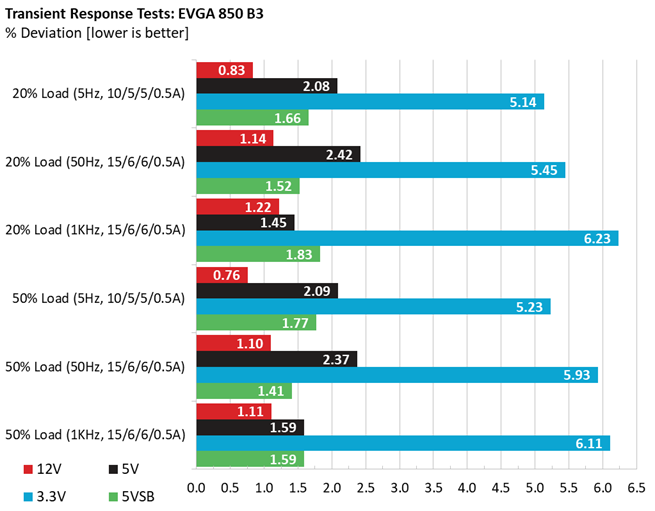




The +12V rail, which matters the most, performs well in these tough tests. The 5V and 5VSB rails also fare admirably. But the 3.3V rail failed all of our benchmarks. Super Flower should look into this rail and fix its performance issues under transient loads.
Get Tom's Hardware's best news and in-depth reviews, straight to your inbox.
Here are the oscilloscope screenshots we took during Advanced Transient Response Testing:
Transient Response At 20 Percent Load – 200ms




Transient Response At 20 Percent Load – 20ms

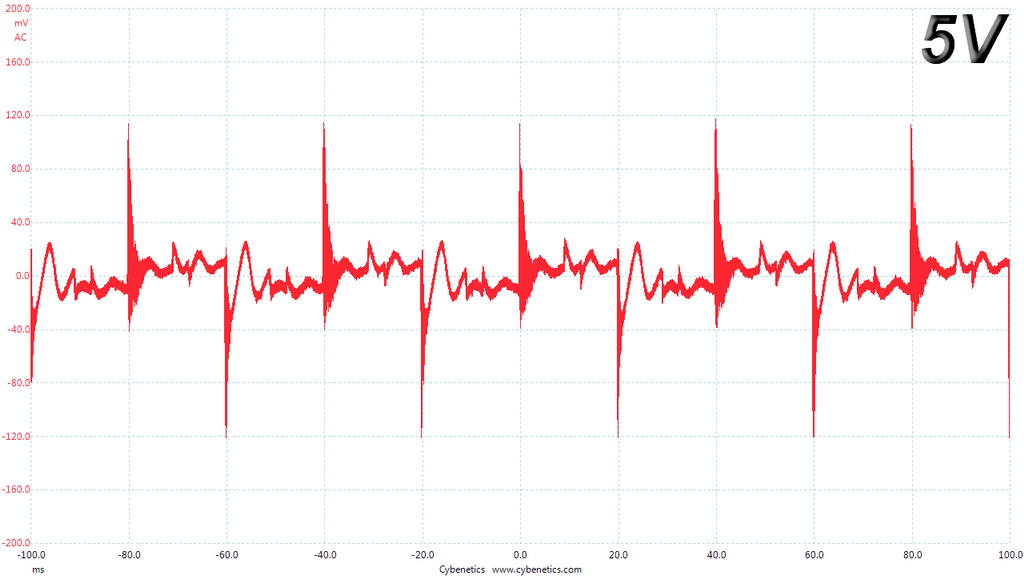


Transient Response At 20 Percent Load – 1ms
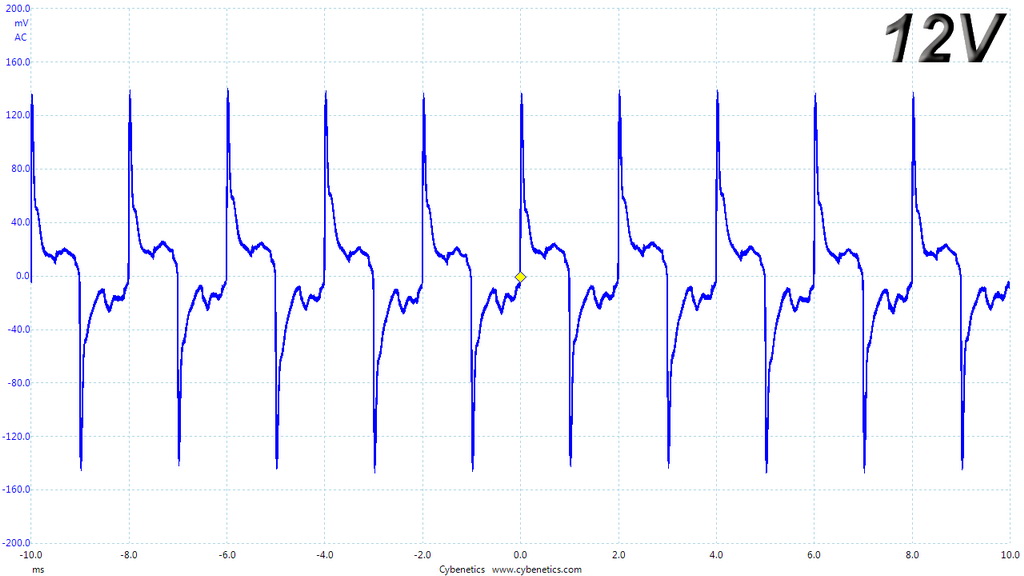



Transient Response At 50 Percent Load – 200ms
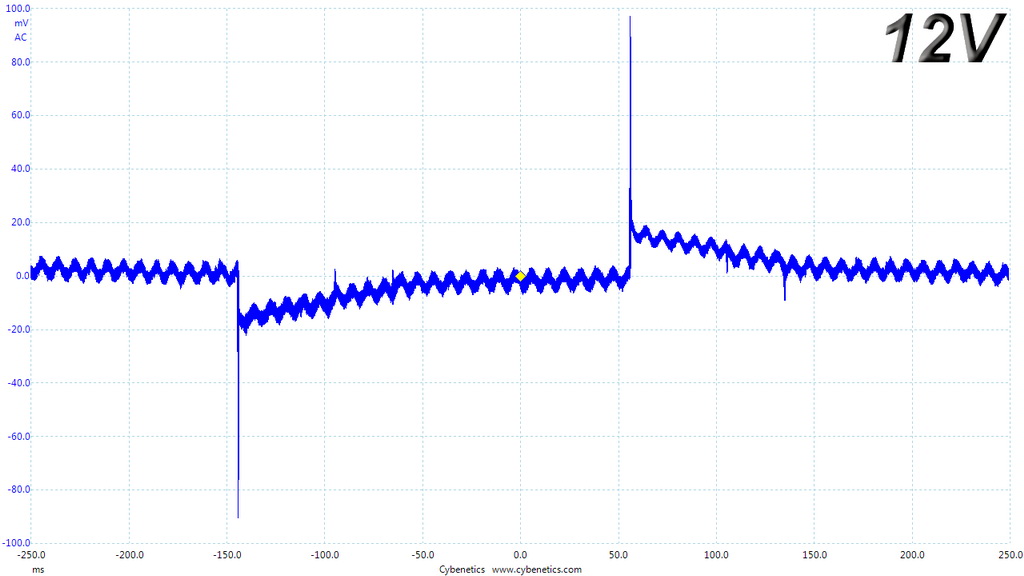



Transient Response At 50 Percent Load – 20ms


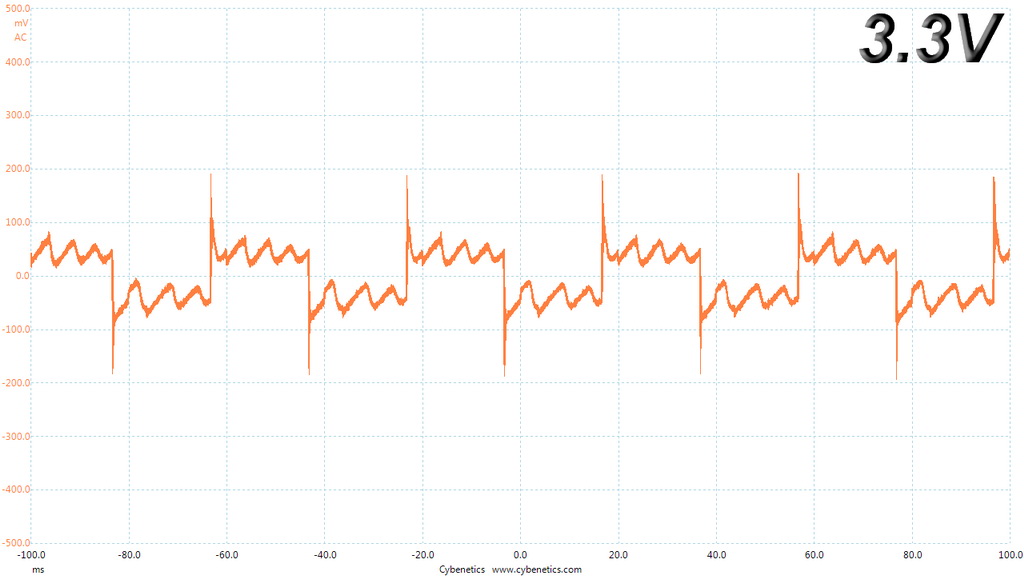

Transient Response At 50 Percent Load – 1ms
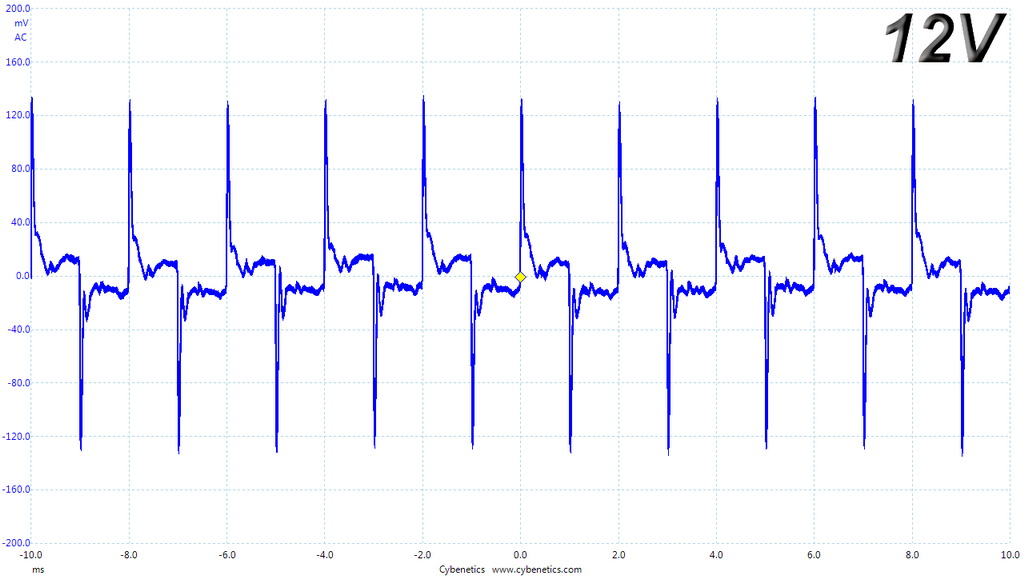



Turn-On Transient Tests
In the next set of tests, we measured the 850 B3's response in simpler transient load scenarios—during its power-on phase.
For our first measurement, we turned the 850 B3 off, dialed in the maximum current the 5VSB rail could output, and switched the PSU back on. In the second test, we dialed the maximum load the +12V rail could handle and started the 850W supply while it was in standby mode. In the last test, while the PSU was completely switched off (we cut off the power or switched the PSU off), we dialed the maximum load the +12V rail could handle before switching it back on from the loader and restoring power. The ATX specification states that recorded spikes on all rails should not exceed 10 percent of their nominal values (+10 percent for 12V is 13.2V, and 5.5 V for 5V).


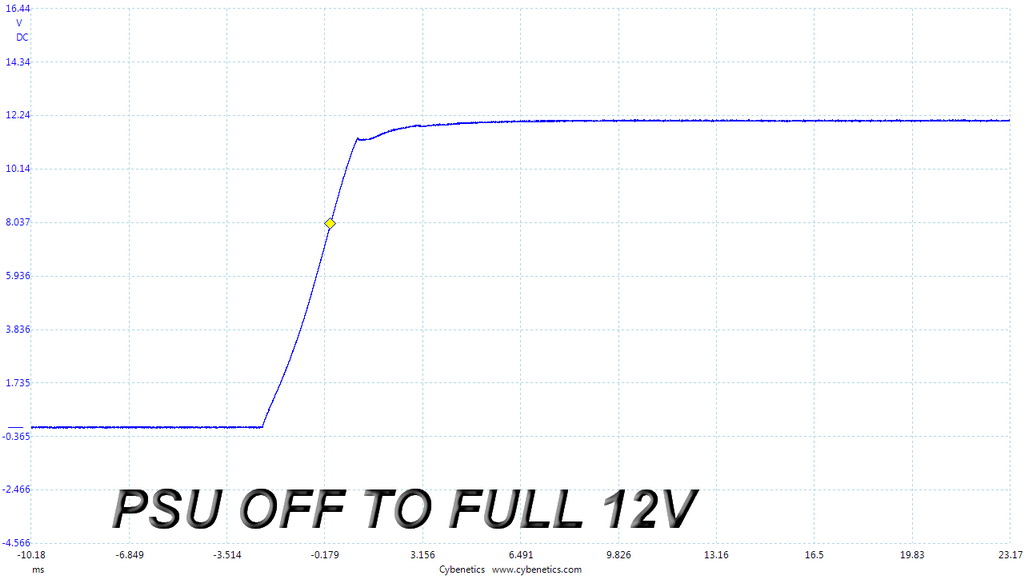
We have no spikes or voltage overshoots to report. EVGA serves up very good overall performance in these tests.
MORE: Best Power Supplies
MORE: How We Test Power Supplies
MORE: All Power Supply Content
Current page: Transient Response Tests
Prev Page Cross-Load Tests & Infrared Images Next Page Ripple Measurements
Aris Mpitziopoulos is a contributing editor at Tom's Hardware, covering PSUs.
-
orionfotl There's a typo in the Final Analysis: "Although we're glad the 850 B3 didn't blow up like the 450W model, this is our second (so fat) B3-series power supply to die on the bench."Reply
So fat.
Shame on the PSU. -
Realist9 Part of what I got from this review and the associated charts is that my next psu will likely be a Corsair unit.Reply -
dstarr3 It seems like the general wisdom is still "Don't buy a PSU unless it has a 7- to 10-year warranty." The best products from the best OEMs always come with those warranties lately.Reply -
Aris_Mp If you ask me the warranty isn't an indication from the moments it is 5 years long. On the other hand when a company avoids sending some specific PSUs for review, then the whole thing looks suspicious.Reply -
dstarr3 Reply20217010 said:If you ask me the warranty isn't an indication from the moments it is 5 years long. On the other hand when a company avoids sending some specific PSUs for review, then the whole thing looks suspicious.
I don't necessary mean that longer warranty = better product. I just mean that there are some OEMs that are better than the rest, and their best PSUs are the best on the market, and all those best PSUs happen to have 7- to 10-year warranties on them. So if you see that warranty on a PSU right now, you can reasonably assume that it is one of the best models from one of the best OEMs. -
Olle P I don't totally agree with the "Pros" and "Cons":Reply
* Six 8-pin PCIe-connectors are supposed to be capable of delivering up to 900W. This PSU can't handle that.
* The efficiency is as advertised. That's neither a "Con" nor a "Pro". (In fact I'm impressed with the efficiency at 20W load. Expected worse.)
* Sleeve bearing is what makes the fan relatively quiet, so it's not a "Con" per se. Had it been a ball bearing fan you'd written "High noise level" as a "Con" instead. -
Aris_Mp Efficiency is a con in general. It is lowReply
If the fan had DBB and an optimal fan profile then it wouldn't be a con. A sleeve bearing fan in a 100 buck PSU doesn't look good and those type of bearings are suited for horizontal installation so they should normally be avoided in PSUs. -
al3xand3r Hi Aris, congratulations for the wonderful review and all of your work.Reply
I've seen all of your reviews, but one thing I do not understand compared to other review sites and that's related to the advanced transient tests. For example, the be quiet! Pure Power 10 600W PSU, in Advanced Transient Test at +12V, 20% - 20ms has a voltage drop of 0.211V. At 50% load 20 ms is a voltage drop of 0.222 volts. Instead, at ardOCP, the same PSU records a 0.520 volt voltage drop at 20% load - 10 ms and 0.540 volts at 50% load – 10ms. And that's a huge difference. And I do not think this difference is because of the reduced time from 20ms to 10ms because at 1ms wich is tougher the drops it's not as high. What is wrong with ardOCP methodology?
Is it possible that a quality PSU like this to have a voltage drop in load so high (0.52 Volts)? And that's just an example. At all the PSU’s I've seen on both sites are differences like this. Same as when you were doing only 50ms or 200ms. Is there any explanation for these figures that do not coincide?
Thank you